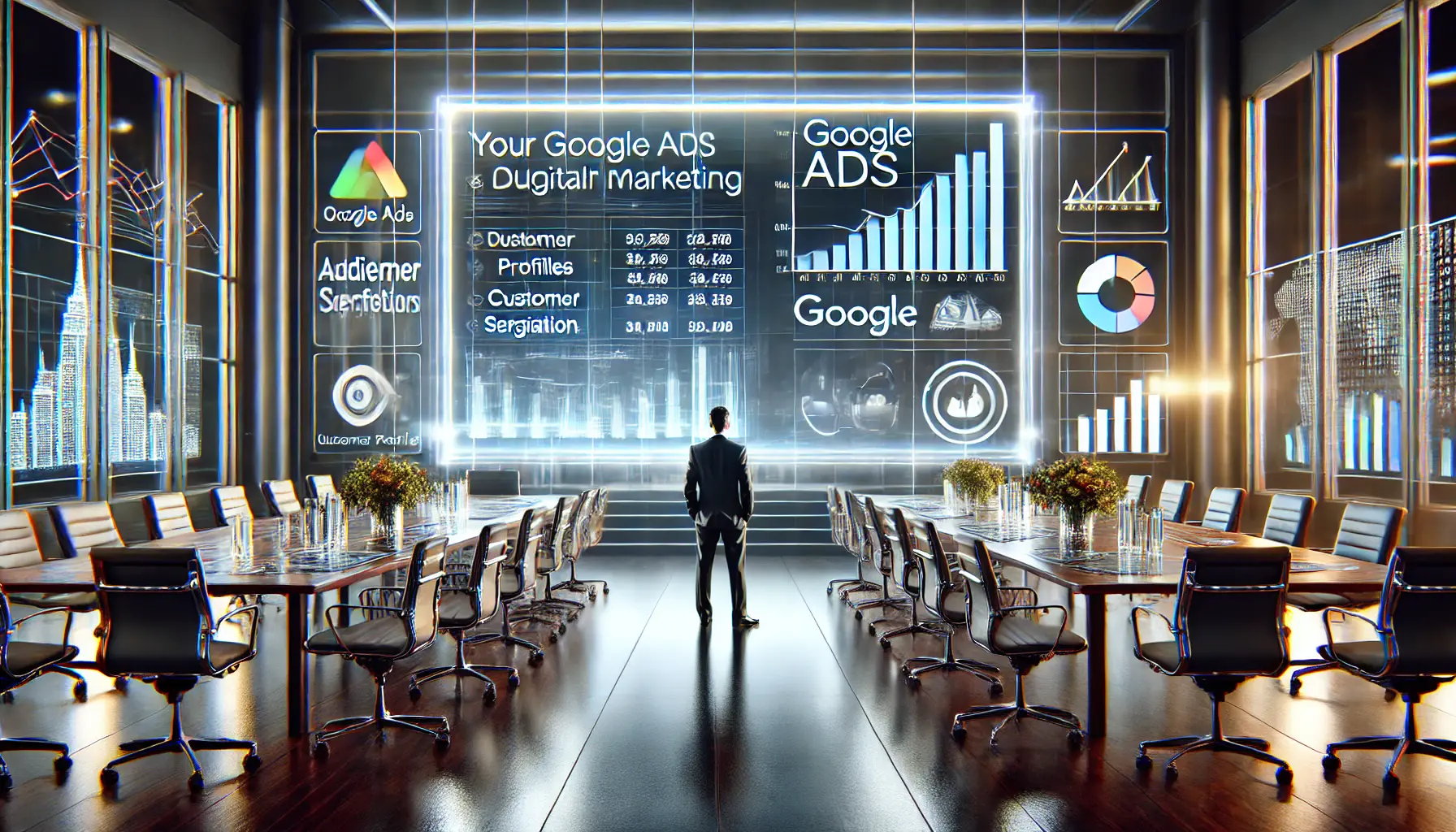The evolution of digital marketing is making the need to find cost-effective ways to reach a large audience increasingly important.
YouTube Ads have become an essential tool for businesses looking to get full value for their advertising spend.
These ads offer unique advantages, combining high engagement with budget-friendly options that other platforms struggle to match.
In other words, YouTube Ads are not just another advertising channel; they are a powerful way to maximize ad spend while achieving meaningful results.
Why do YouTube Ads work so effectively for businesses aiming to cut costs?
In this article, we’ll explain why YouTube Ads are worth your investment.
Key reasons include targeted advertising, flexible ad formats, and better capabilities for measuring return on investment than other platforms offer.
Let’s explore how YouTube Ads can transform your advertising strategy, providing significant returns on investment without breaking the bank.
This is why YouTube Ads are cost-effective.
- Why YouTube Ads Are a Cost-effective Choice
- Efficiency in Budget Utilization through Targeting: Why YouTube Ads are Effective
- Valuable Ad Formats That Offer Value for Money
- Analyzing ROI: Measuring YouTube Ad Effectiveness
- Future-Proofing Your Ad Strategy on YouTube
- Conclusion: Why YouTube Ads Are Cost-effective for Your Business
- YouTube Ads FAQs
Why YouTube Ads Are a Cost-effective Choice
There are numerous reasons why businesses view YouTube Ads as a cost-effective option.
Much of this stems from the platform’s unique structure and reach.
Unlike traditional advertising channels, YouTube combines the power of video marketing with precision targeting, enabling businesses to reach their ideal audience effectively and within budget.
This makes it easier to maximize returns and reduce wasted ad spend.

Exploring the cost structure of YouTube Ads in a business setting.
Understanding the Cost Structure of YouTube Ads
YouTube uses a ‘TrueViewA YouTube ad format where advertisers pay only if users engage with the ad.‘ model, charging advertisers only when a user actively engages with the ad.
This means you only pay when a viewer watches your video for at least 30 seconds or clicks on a call-to-actionA prompt that encourages viewers to take a specific action, like clicking a link..
This setup ensures your ad budget is used to reach genuinely interested users, not just passive viewers, making YouTube Ads highly cost-effective.
Additionally, YouTube Ads offer flexible pricing options to fit different budget sizes.
Here are some of the cost factors that make YouTube Ads appealing:
- Pay-per-view model: Advertisers pay only for views, ensuring that each dollar contributes to real engagement.
- Flexible budgeting: Businesses can set daily or campaign budgets, giving them control over spending based on needs and ad performance.
- Bid adjustments: YouTube allows bid adjustments, enabling advertisers to control costs further by setting a maximum amount per view.
With these cost structures, YouTube Ads make it easy to manage ad spend and achieve meaningful results without overspending.
For businesses focused on cost-efficiency, YouTube Ads offer a compelling choice that aligns with both budget constraints and advertising goals.
YouTube Ads combine powerful targeting and flexible budgeting, providing a cost-effective advertising solution for businesses of all sizes.
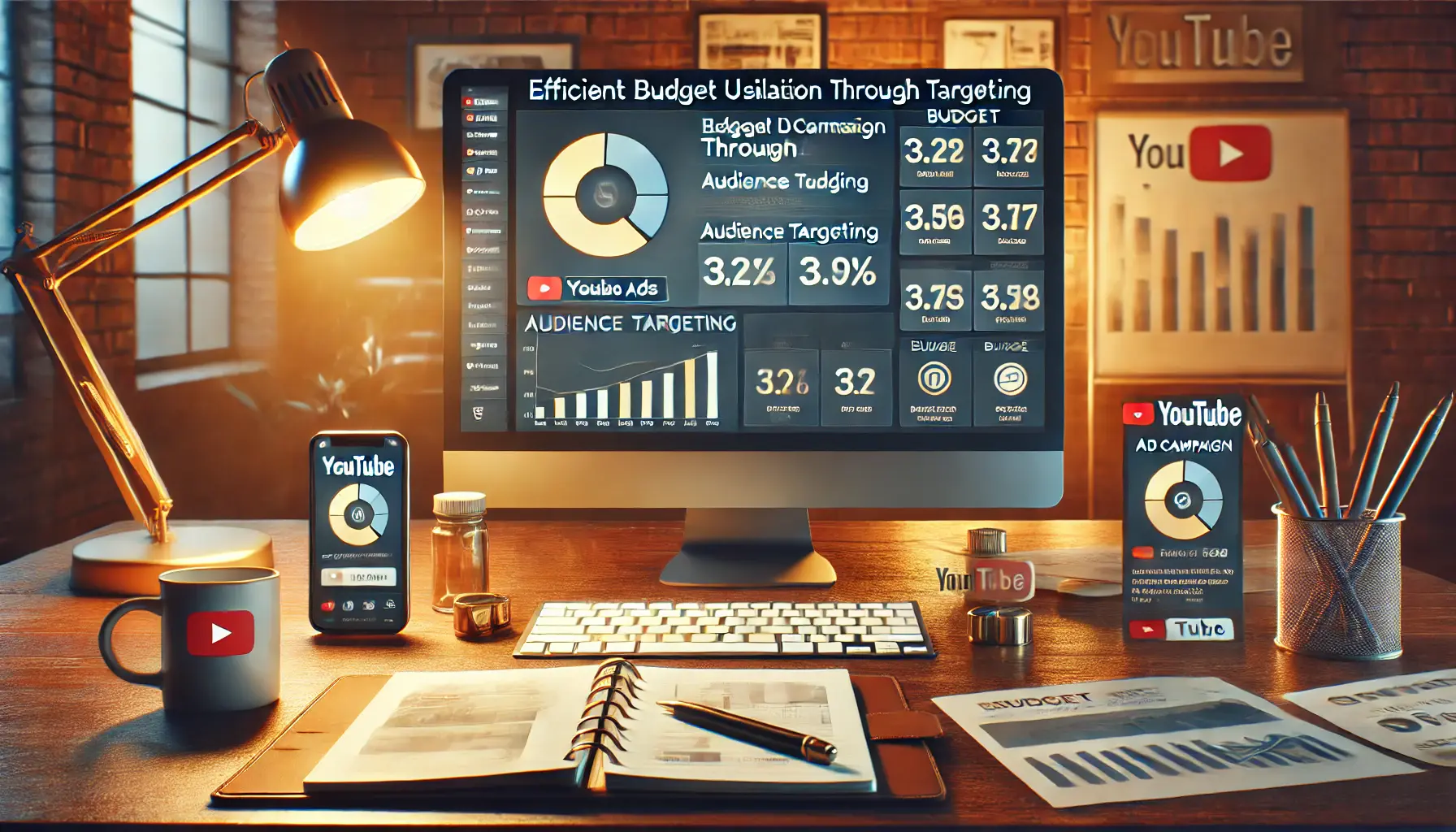
Utilizing budget efficiently with YouTube’s targeted ad features.
Efficiency in Budget Utilization through Targeting: Why YouTube Ads are Effective
One of the key elements that makes YouTube Ads cost-effective is their ability to target audiences effectively.
Unlike traditional forms of advertising, which convey messages broadly regardless of individual interests, YouTube Ads put businesses in front of the specific audiences most likely to engage.
By maximizing budget efficiency through precise targeting, advertisers can ensure their ads reach the right people at the right time.
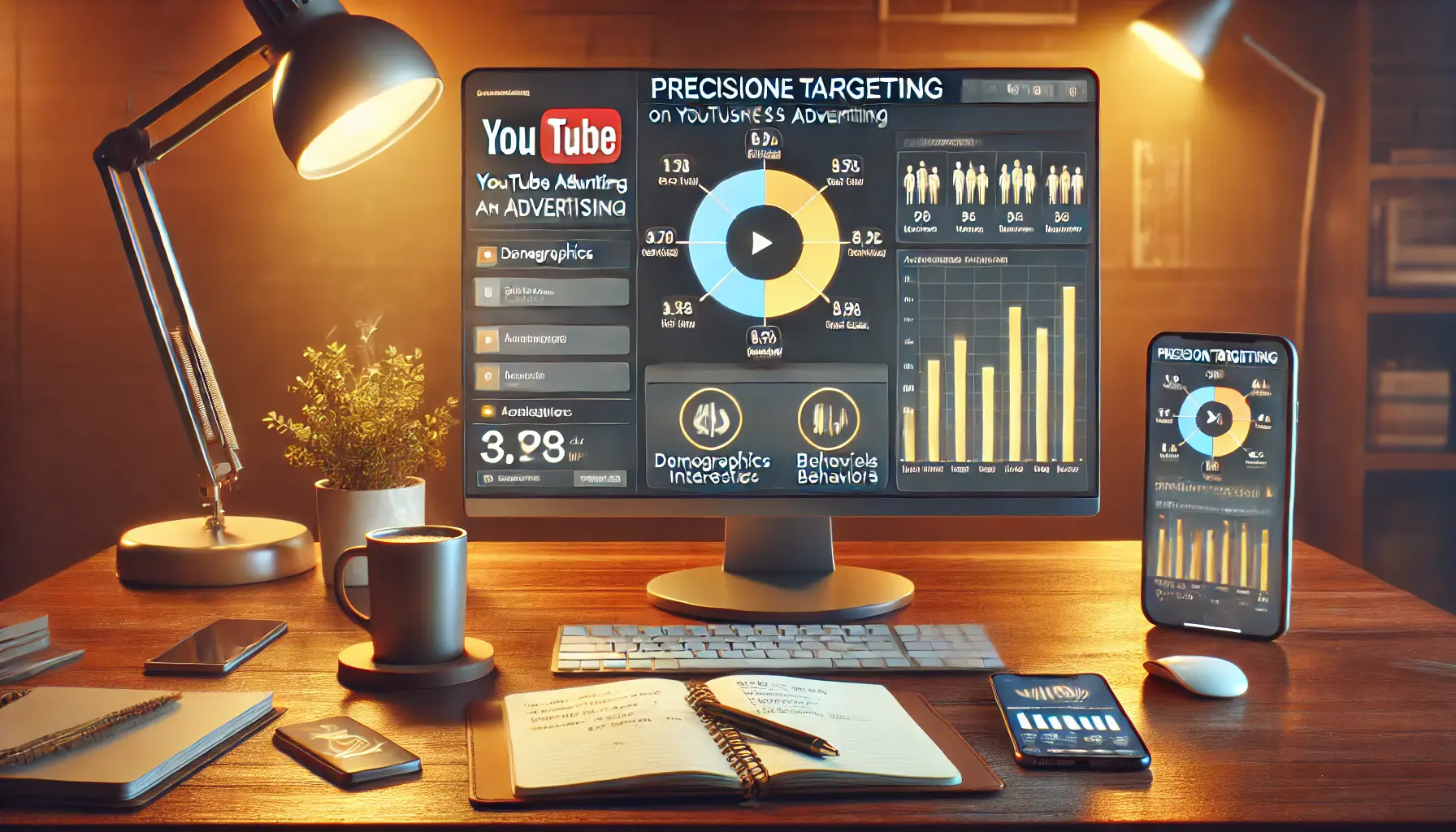
Implementing precision targeting on YouTube for effective advertising.
Precision Targeting on YouTube
YouTube offers several targeting options that enable businesses to refine ad campaigns based on factors such as demographicsStatistical data relating to the population and specific groups within it., interests, and viewing behaviors.
For example, advertisers can target users based on age, gender, income level, or specific interests and hobbies.
This level of granularity ensures that ad budgets are spent only on users likely to be interested in the product or service being advertised, enhancing cost-efficiency by reducing wasted impressions.
Additionally, YouTube has powerful contextual targetingAn advertising method where ads are placed in relevant content based on keywords and topics., where ads appear next to content that closely aligns with a brand’s message.
This approach improves ad relevance, allowing businesses to connect with users already engaging with similar content.
As a result, businesses can achieve higher user engagement and better returns on ad spend.

Leveraging audience insights to improve YouTube ad reach.
Using Audience Insights to Improve Reach
YouTube Ads also come with comprehensive audience insights, enabling advertisers to make further optimizations to their campaigns.
Businesses can learn what types of content resonate most with their target audience by analyzing key metrics such as watch time, engagement rates, and audience demographics.
These insights are invaluable for adjusting ad strategies to target audience segments showing the most interest, maximizing return on investment.
With access to YouTube’s powerful audience data, businesses can continuously fine-tune targeting to improve budget efficiency over time.
This ability to adapt targeting based on real-time feedback makes YouTube Ads one of the most effective platforms for cost-conscious advertisers looking to maximize reach while controlling costs.
- Demographic Targeting: Target based on age, gender, and income.
- Interest Targeting: Reach users based on hobbies and interests.
- Contextual Targeting: Place ads next to relevant content.
- Behavioral Targeting: Target based on past viewing habits.
With these targeted advertising options, YouTube Ads provide a highly efficient and cost-effective solution for businesses looking to maximize their advertising budget.
Whether reaching users by demographic, interest, or behavior, YouTube allows ad spend to be allocated more strategically, leading to better results and lower overall costs.
With precise targeting options, YouTube Ads allow businesses to reach relevant audiences, increasing ad efficiency and reducing wasted spend.
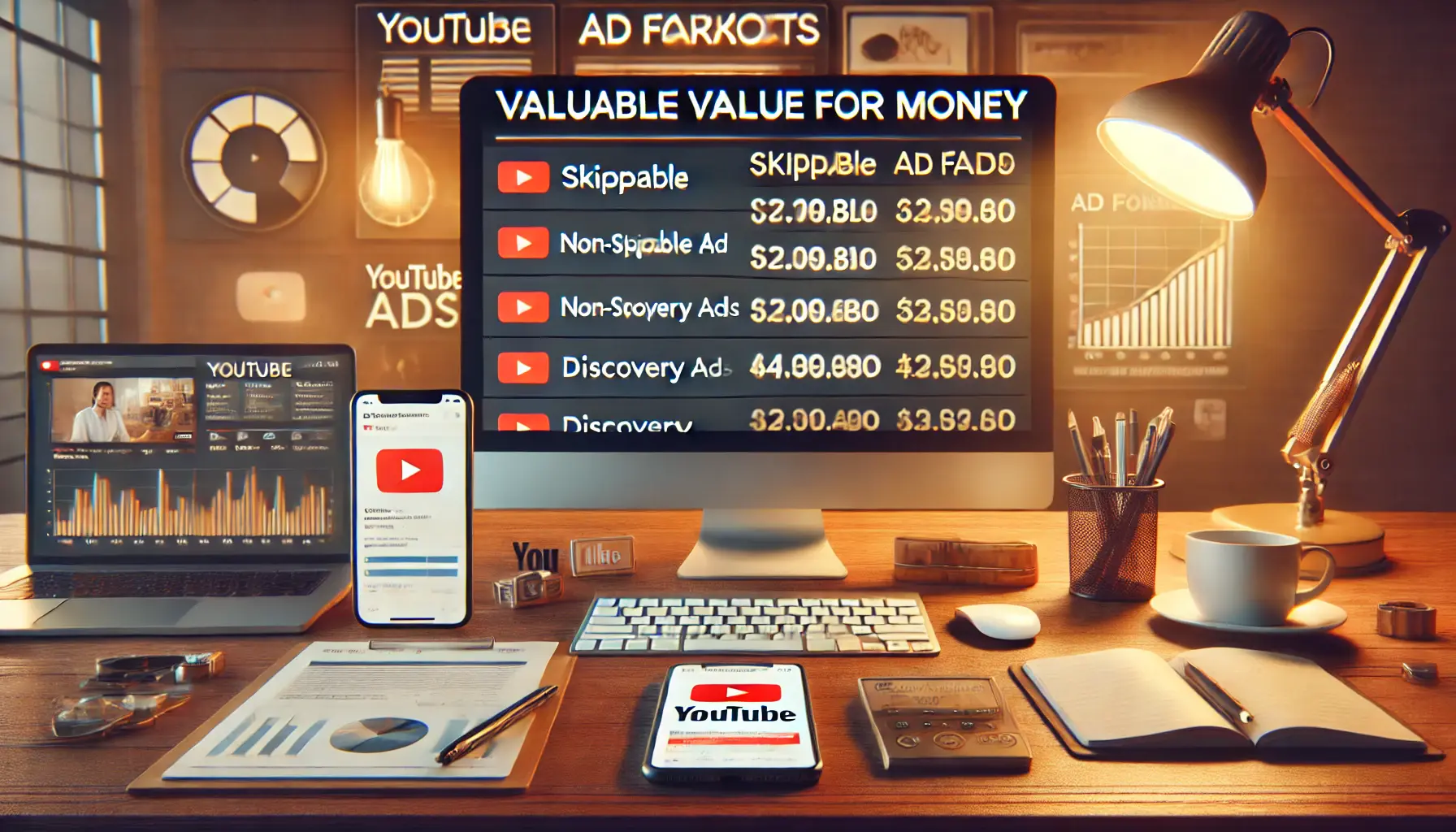
Exploring cost-effective YouTube ad formats for better value.
Valuable Ad Formats That Offer Value for Money
YouTube provides a range of ad formats that businesses can work with effectively, tailored to the objectives of their campaigns.
Each ad format is optimized to ensure value for money as you reach out to your target audience without exceeding your budget.
With options such as skippable ads, non-skippable ads, bumper ads, and more, YouTube allows flexibility in crafting campaigns that meet specific objectives and budgetary constraints.
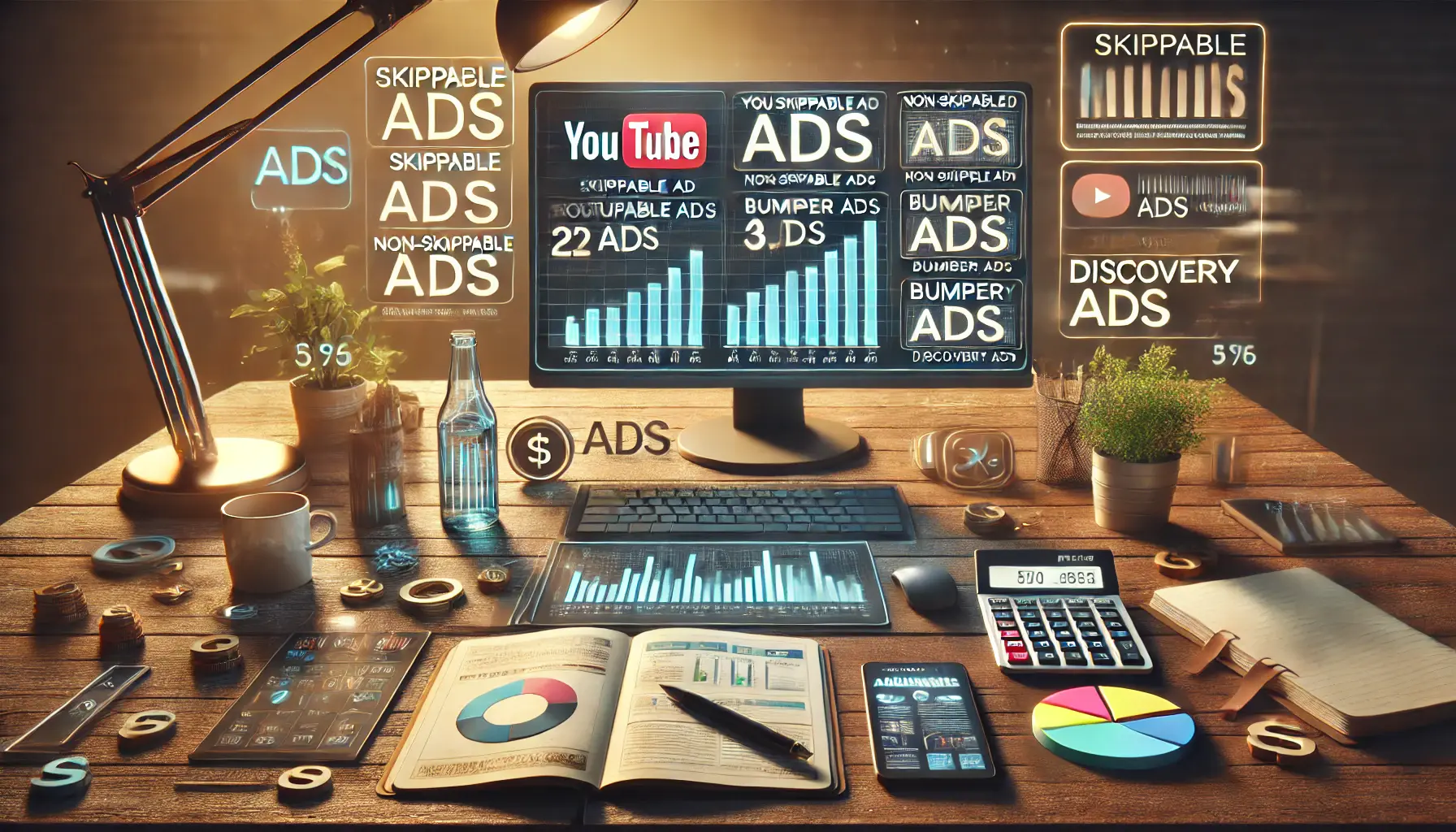
Understanding different YouTube ad types and their associated costs.
Types of YouTube Ads and Their Costs
YouTube offers various ad formats to cater to different business needs.
These include:
- Skippable In-Stream Ads: These ads run before, during, or after a video and can be skipped after five seconds. Advertisers pay only when viewers watch the ad for 30 seconds or engage with it. This format is cost-effective, as you only pay for engaged views.
- Non-Skippable In-Stream Ads: These ads play before or during a video and run for 15 to 20 seconds. While these tend to be more expensive, they ensure that the entire message is viewed, making them ideal for brand awareness campaigns.
- Bumper Ads: Bumper ads are six-second, unskippable ads that run before a video. They are cost-effective for creating brand recall with a short and impactful message.
- Video Discovery Ads: These ads appear on YouTube’s homepage and search results, as well as related video suggestions. Advertisers are charged when users click on the ad to view it, making this format excellent for driving high-intent traffic to your content.
Whether the goal is maximum engagement or increased brand exposure, these formats enable businesses to get the best value for their advertising budget.

Selecting the ideal YouTube ad format to align with budget goals.
Choosing the Right Format for Budget Goals
The choice of ad format on YouTube is crucial for ensuring budget efficiency.
For businesses looking to gain engagement and interaction, skippable in-stream ads offer flexibility in reaching potential customers without paying for unengaged viewers.
On the other hand, non-skippable and bumper ads are great options for brands focused on awareness and recall.
Here are a few tips to help you select the right YouTube ad format based on your budget and objectives:
- For Engagement: Skippable ads help reach users interested in your content without wasting money on skipped ads.
- For Brand Awareness: Consider non-skippable and bumper ads, ensuring the message is viewed in full.
- For High-Intent Traffic: Use video discovery ads to capture users searching for content similar to yours.
With these options, YouTube Ads enable businesses to allocate ad spend toward formats that align with specific campaign goals and budget limitations.
This strategic selection can drive improved results and yield a better return on investment.
With a variety of ad formats, YouTube allows businesses to choose the most cost-effective option for their objectives.
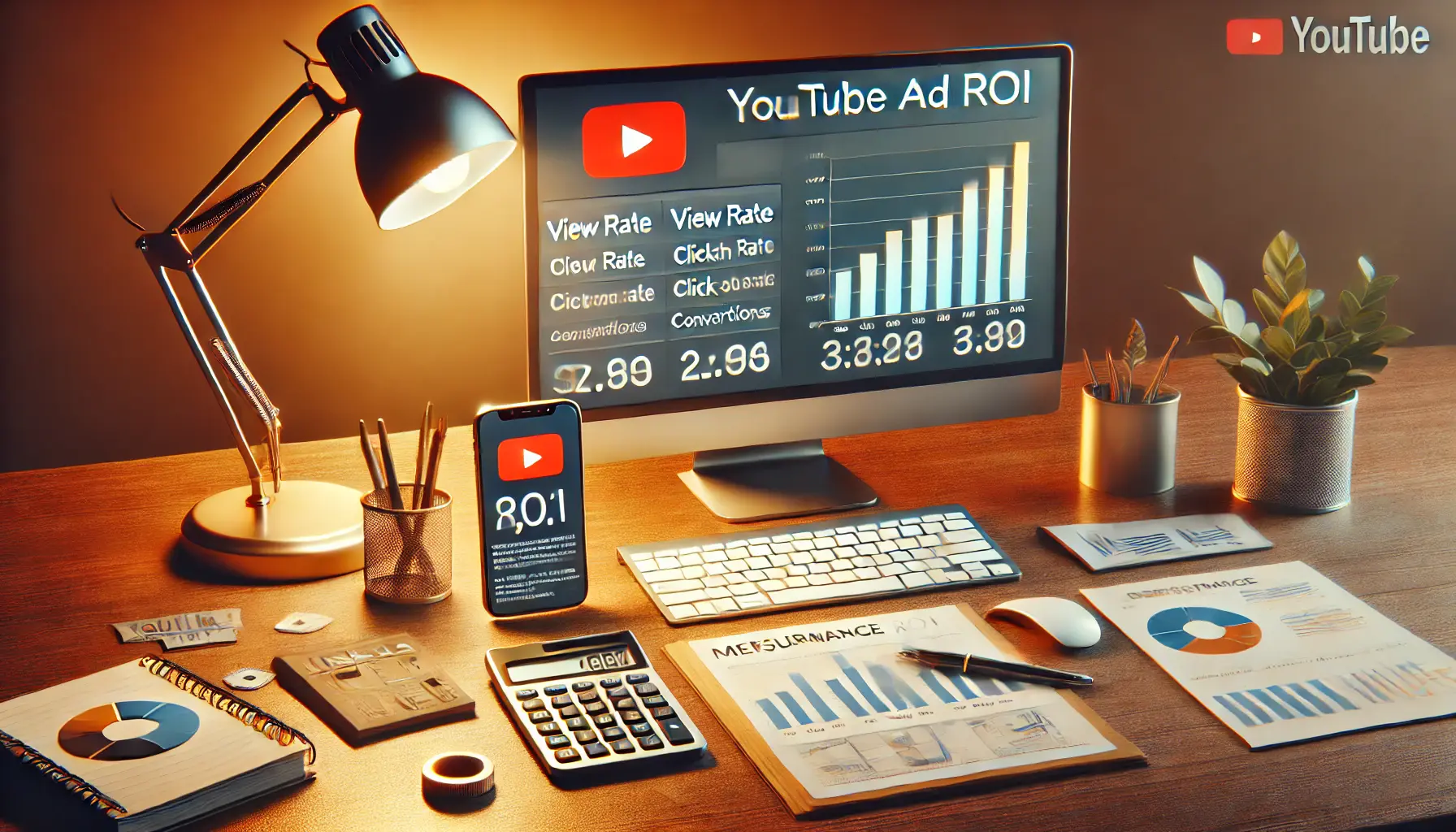
Measuring YouTube ad effectiveness through ROI analysis.
Analyzing ROI: Measuring YouTube Ad Effectiveness
Measuring the effectiveness of a YouTube ad campaign requires a thorough analysis of ROI.
This analysis is crucial for gaining deep insights into how the ads function and for making data-driven decisions regarding future campaigns.
With a plethora of metrics at their disposal, businesses can analyze their ad performance to optimize strategies and ensure this avenue proves cost-effective.
By focusing on key metrics, advertisers can refine their approach, maximize their budgets, and achieve meaningful results.

Tracking essential metrics for YouTube ad performance.
Key Metrics to Track for YouTube Ads
When it comes to analyzing ROI for YouTube Ads, several key metrics can provide valuable insights into performance:
- View Rate: This metric indicates the percentage of users who viewed your ad compared to the total number of impressions. A high view rate means that your ad captures the audience’s attention and is relevant to them.
- Cost Per View (CPV): A higher CPV means you are spending more money per view, whereas a low CPV allows for better budget allocation because your ads are running well.
- Click-Through Rate (CTR): This percentage reflects how many people clicked after watching your ad. A high CTR indicates effective targeting and a compelling call-to-action.
- Conversion Rate: This is the percentage of users who took a desired action after viewing your ad, such as making a purchase or signing up for a newsletter. A higher conversion rate signals ad relevance and the ability to drive engagement.
- Engagement Metrics: Engagement includes likes, shares, and comments on your ad. High engagement suggests that your content resonates with viewers, improving brand visibility and recall.
Using these metrics collectively, businesses can gain a comprehensive understanding of their ad performance and leverage this data for strategic changes aimed at optimizing ROI.
While CPVCost Per View, the price advertisers pay for each view of their ad. focuses on efficiency in getting the message in front of users, conversion rateThe percentage of users who complete a desired action, such as a purchase, after clicking an ad. measures the efficacy of the ad in generating actions.
To optimize your campaigns effectively:
- Balance Both Metrics: Aim for a low CPV while maintaining an acceptable cost per conversion. If your CPV is low but conversions are not increasing, it may indicate that your ad content needs refinement.
- Refine Targeting: Utilize audience insights to target users who are more likely to convert. This can help lower your cost per conversion over time while sustaining a healthy view rate.
Understanding and optimizing these cost metrics ensures that your YouTube Ads are not just being viewed but are also effective at realizing your marketing goals.
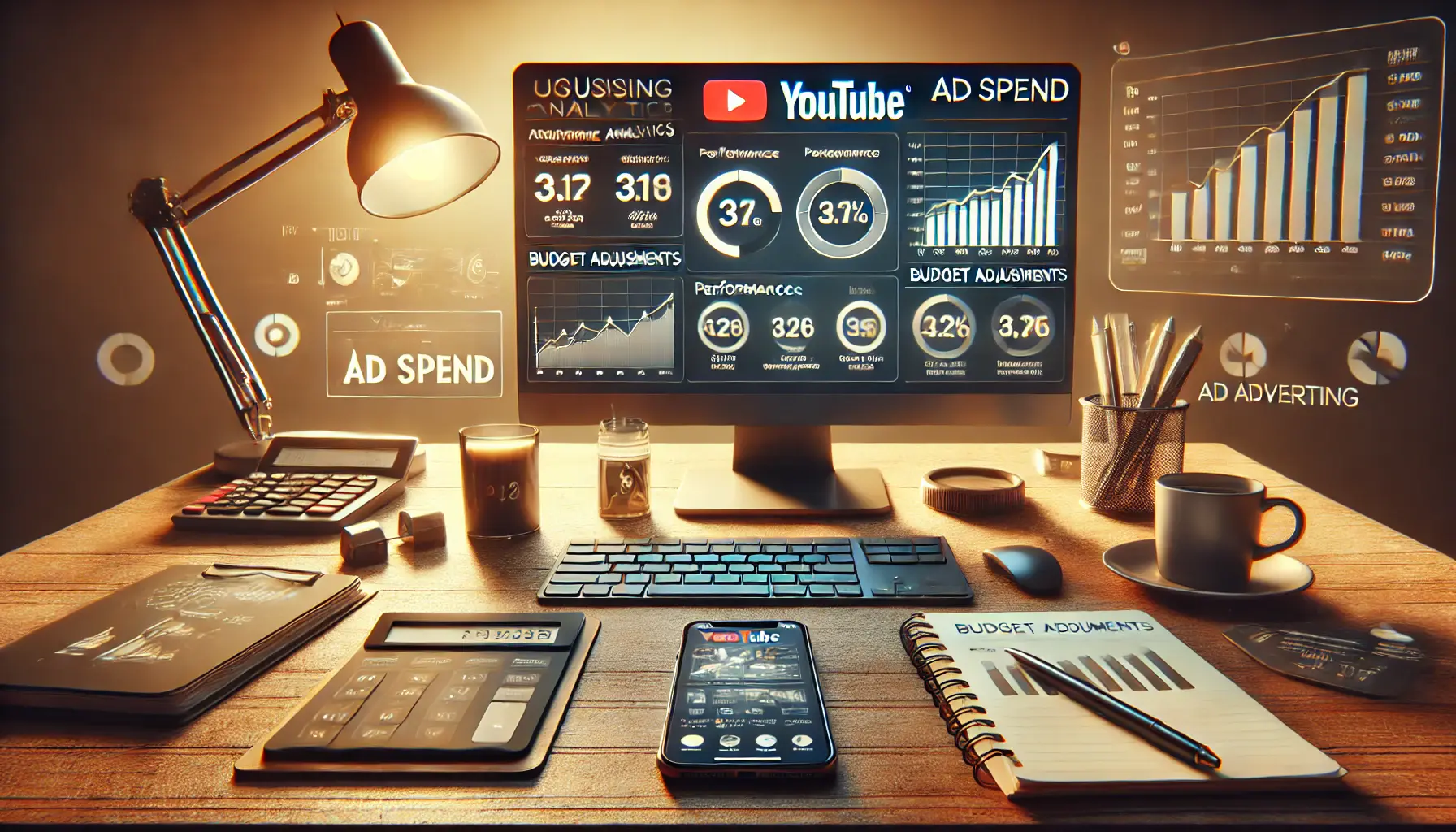
Optimizing ad spend on YouTube using analytics insights.
Using Analytics to Optimize Ad Spend
YouTube provides a robust analytics platform where businesses can track ad performance in real-time.
By regularly monitoring performance data, advertisers can make informed decisions regarding targeting refinements, content strategy adjustments, and budget reallocations.
Here’s how you can leverage YouTube Analytics for better ad spend optimization:
- Regular Reporting: Set up regular reporting to monitor key metrics and identify trends. This helps you discern what’s working and which areas need improvement.
- A/B Testing: Test different creative formats, messaging, and targeting to find what works best. A/B testing enables you to optimize your ad spend for better overall ROI.
- Adjusting Budgets: Allocate additional budget to scale ads based on analytics that show which ad creatives perform best. Conversely, cut spending on ads that underperform to enhance overall efficiency.
By leveraging YouTube’s analytics tools and focusing on key performance metrics, businesses can effectively measure ROI, optimize ad spend, and achieve greater success in their advertising efforts.
Tracking metrics like view rate, CTRClick-Through Rate, the percentage of viewers who click on an ad after seeing it., and conversion rate gives a complete view of ad performance, optimizing ROI.
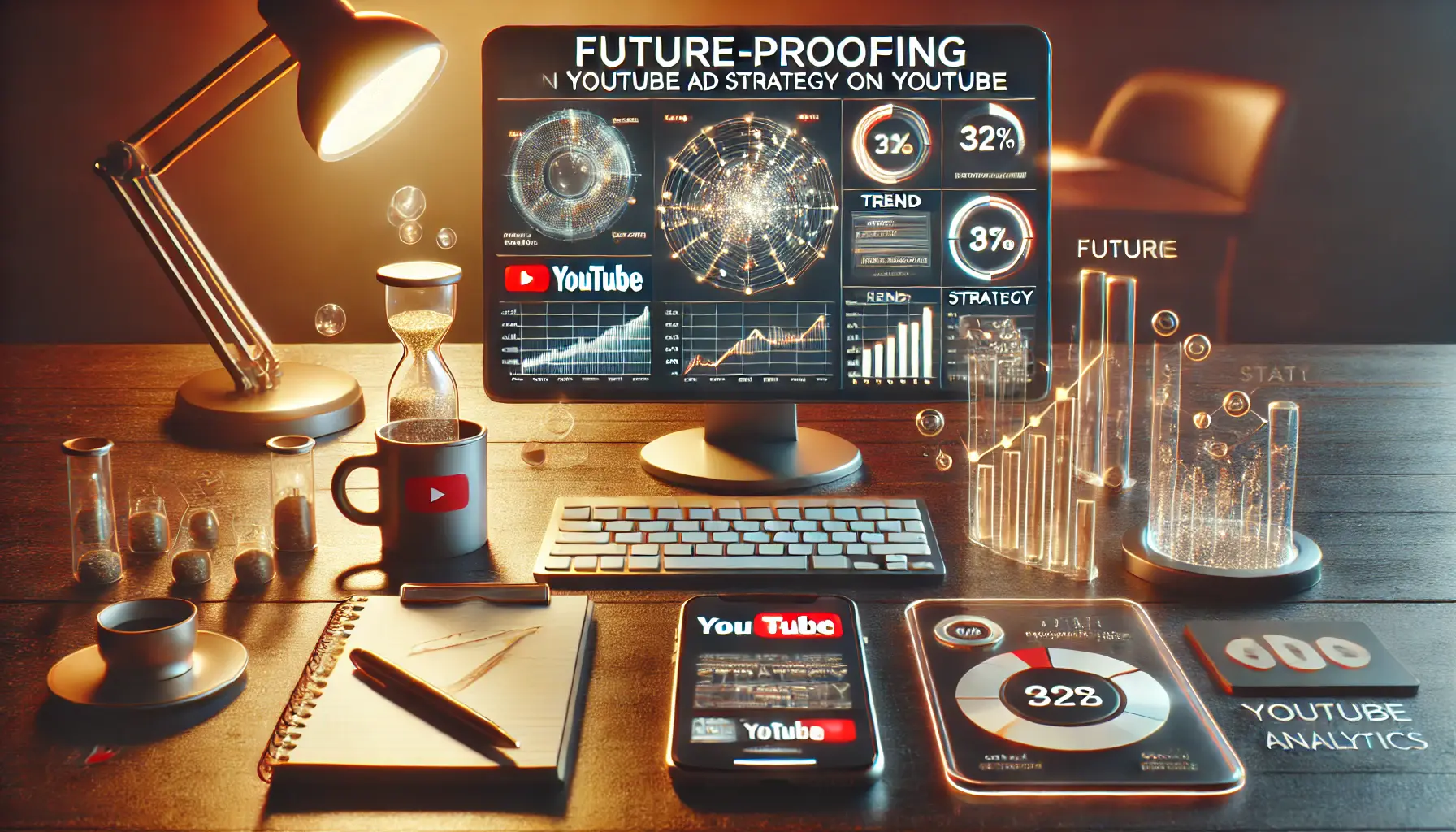
Planning a future-proof YouTube ad strategy.
Future-Proofing Your Ad Strategy on YouTube
In the ever-changing world of digital marketing, businesses must always stay one step ahead to avoid lagging in this highly competitive market.
With YouTube Ads, brands can adapt and future-proof their ad strategies to remain updated with emerging trends and changes in consumer behavior.
Understanding these trends and embedding them into your advertising strategy is essential for keeping your campaigns relevant and effective in the foreseeable future.

Exploring the latest trends in YouTube advertising.
Emerging Trends in YouTube Advertising
Here are some of the major trends that are directly influencing the future of YouTube advertising:
- Increasing Focus on Video Content: As all demographics engage more with video content, brands need to develop high-quality, engaging video ads. This trend is driven by viewers’ varied preferences for more visual and interactive experiences.
- Shopping Integrations: YouTube is enhancing the e-commerce experience by allowing businesses to sell products directly through ads. This shift makes YouTube a valuable platform for integrating advertisements with sales.
- Personalization: Improvements in data analytics allow advertisers to design highly personalized ad experiences tailored to viewer preferences. Personalized content leads to more engagement and conversions, making it a key component of effective advertising.
- Short-Form Video Content: The rise of platforms like TikTok has encouraged YouTube to focus on short-form content, particularly with the YouTube Shorts feature. Advertisers should consider incorporating short, impactful ads that can quickly capture viewer attention and drive engagement.
By keeping an eye on these trends, businesses can adapt their YouTube advertising strategies to meet the evolving needs of their audiences and leverage new opportunities for growth.
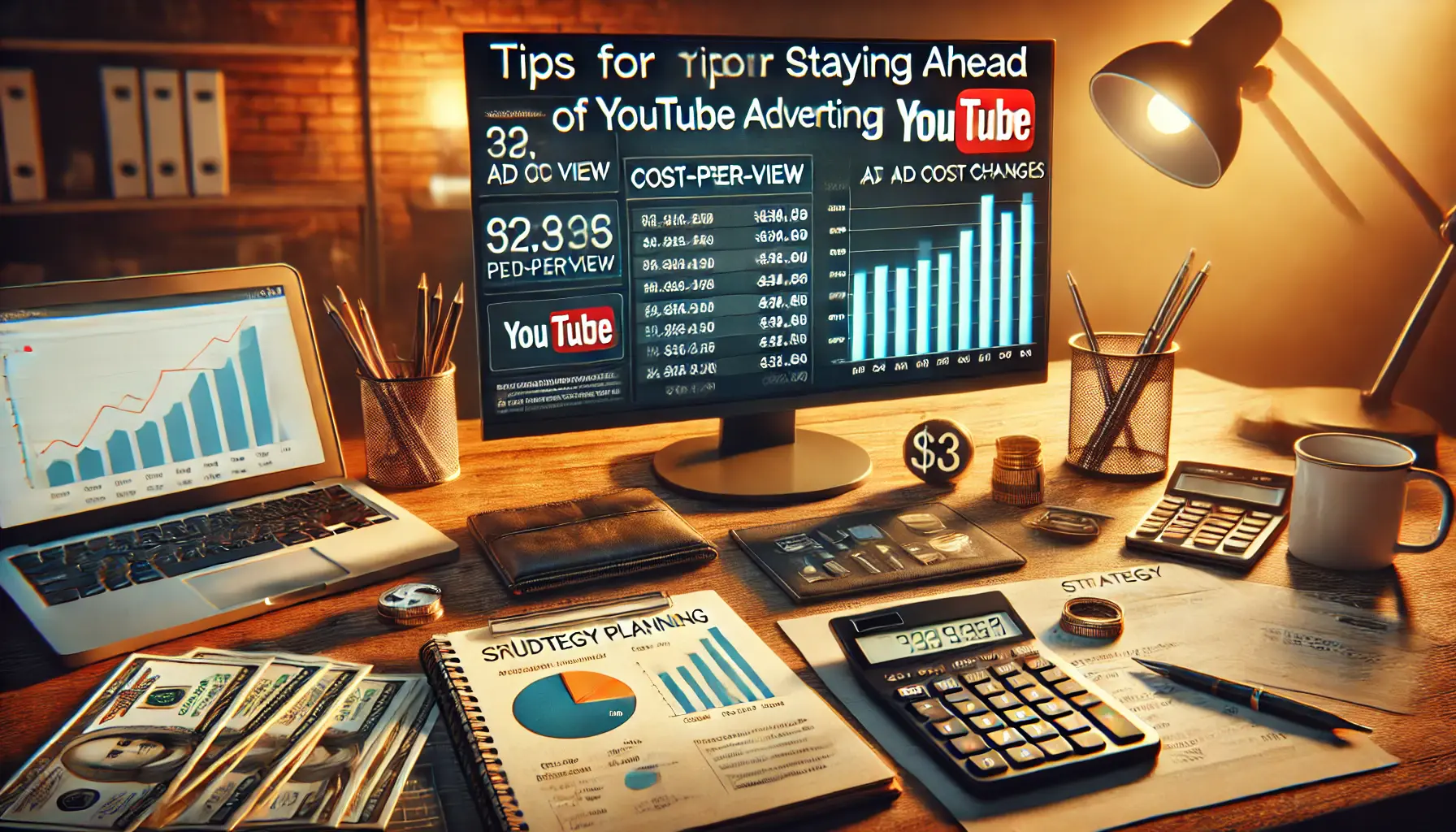
Staying ahead of YouTube ad cost changes with strategic insights.
Tips for Staying Ahead of Ad Cost Changes
As the advertising landscape shifts, staying informed about cost changes is essential for maintaining a successful ad strategy.
Here are a few tips to help you stay ahead:
- Regularly Review Analytics: Consistently analyze your ad performance and budget distributions. By doing this, you will be able to identify trends in costs and returns, helping you make timely and effective adjustments.
- Be Agile with Your Budget: Flexibly allocate your budget based on ad performance and market conditions. If some ads underperform or costs rise, readjust your spending to optimize results.
- Stay Informed: Keep updated about changes in the industry through webinars, forums, and by monitoring trending topics related to ad costs and strategies. This will enable your business to remain attuned to changes in YouTube advertising, ensuring that your spending is value-driven.
The more you develop your strategy, the more opportunities you will have to expand your reach on the platform.
To capitalize on YouTube innovations, consider the following:
- Capitalize on YouTube Ads Innovations: Experiment with new ad formats and targeting options as soon as they become available. YouTube frequently tests features that can enhance user experience and engagement, potentially boosting ad performance.
- Drive Interaction: Engage viewers with interactive elements such as polls and cards to encourage action. These features can enhance viewer experience and support effective ad delivery.
- Focus on Quality, Not Quantity: With growing competition for viewer attention, prioritize creating high-quality, engaging content that resonates with your target audience. This focus can lead to better interaction and returns from your advertising efforts.
By staying informed about emerging trends and leveraging YouTube’s latest features, businesses can future-proof their ad strategies to ensure they remain relevant and effective in a rapidly changing digital landscape.
Adapt to changes by keeping an eye on trends and innovations in YouTube Ads to ensure long-term relevance and effectiveness.

Highlighting the cost-effectiveness of YouTube ads for businesses.
Conclusion: Why YouTube Ads Are Cost-effective for Your Business
In a nutshell, YouTube Ads offer a cost-effective way to maximize an advertising budget while still providing a great return on investment in terms of engagement and reach.
As the digital marketing landscape evolves, it is crucial to leverage the best advertising strategies available.
With the unique benefits that YouTube provides, brands can connect effectively with their target audiences and deliver impactful results.

Summarizing key takeaways from effective YouTube advertising.
Key Takeaways
Here are some key points discussed in the article:
- Targeted Ads: YouTube offers advanced targeting options that enable advertisers to reach specific demographics, allowing their budgets to focus on engaged users.
- Variety of Ad Formats: Businesses can utilize various ad formats, such as skippable in-stream ads, non-skippable ads, and video discovery ads, to meet their specific objectives.
- Measurable ROI: Advertisers can track essential metrics like view rate, cost per view, and conversion rate to assess ad performance and optimize campaigns accordingly.
- Emerging Trends: By considering new trends, including short-form content and shopping integrations, businesses can evaluate the effectiveness of their advertising strategies.
- Continuous Optimization: Regular reporting through YouTube’s analytics tools and conducting A/B testing will lead to refined approaches and improved efficiency in ad spending.
As more businesses shift operations digitally, understanding the cost-effectiveness of YouTube Ads is essential.
By leveraging the points discussed in this article, brands can remain relevant and achieve their desired impact in advertising efforts.
Overall, YouTube Ads represent a compelling opportunity for brands to connect with audiences effectively and affordably—a key factor for future growth and success.
YouTube Ads provide a strategic and budget-friendly advertising platform, making it ideal for businesses aiming for effective, affordable reach.
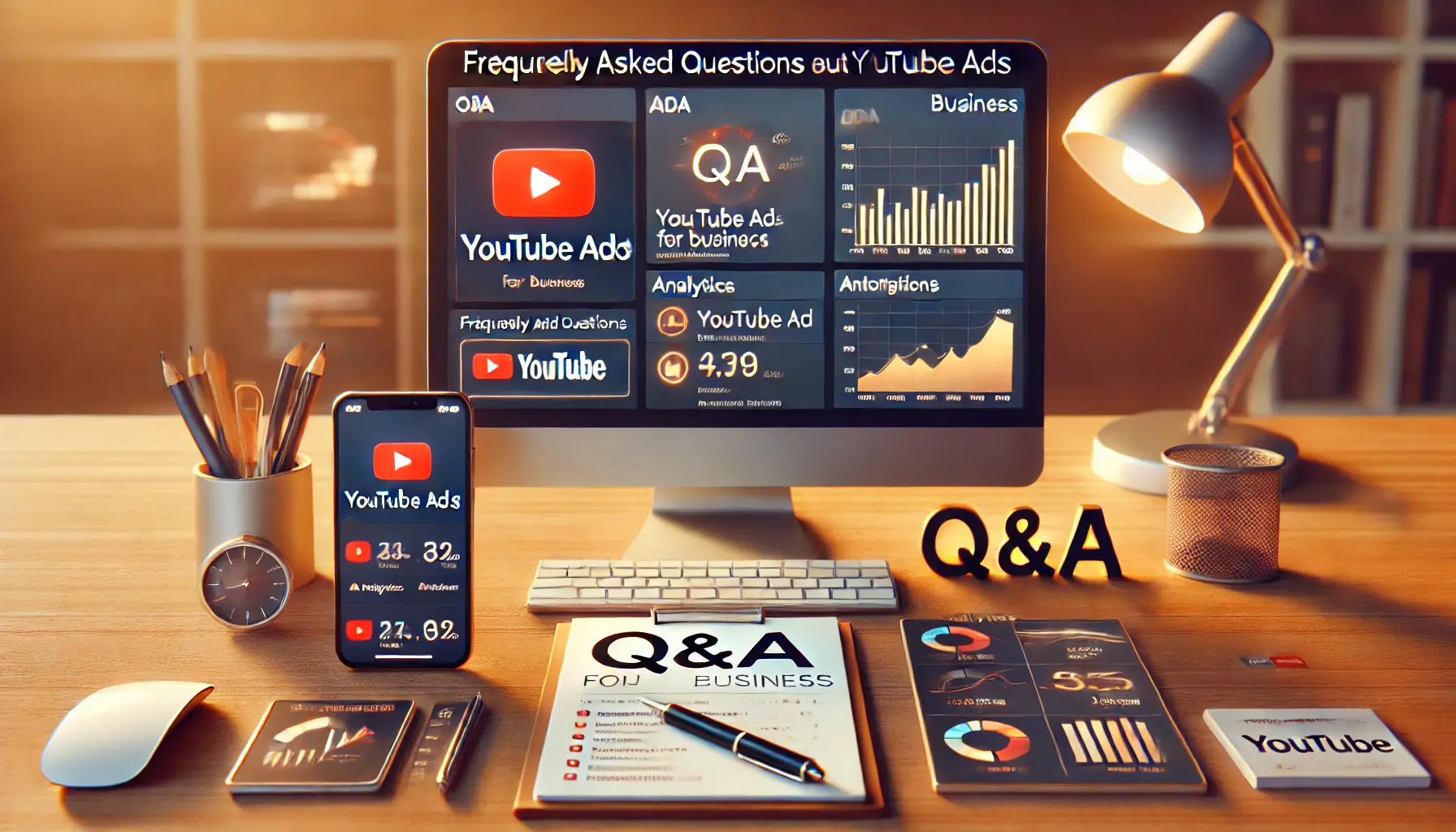
Answering frequently asked questions about YouTube ads.
Your campaigns can be managed by an agency specialized in Google Ads, check out our service page.
YouTube Ads FAQs
Here are the common questions regarding YouTube Ads and how they effectively help businesses:
YouTube Ads come with advanced targeting options that allow advertisers to target desired demographics based on interests, behaviors, and location.
This ensures that budgets are utilized effectively on viewers who have a higher chance of conversion.
YouTube offers multiple creative ad formats, including skippable in-stream ads, non-skippable ads, bumper ads, and video discovery ads.
These options provide flexibility for brands to choose the best format that suits their advertising goals.
Success can be measured using key metrics such as view rate, cost per view, click-through rate, and conversion rate.
These metrics allow advertisers to observe ad performance and optimize strategies accordingly.
YouTube Ads offer better cost efficiency due to the ability to target engaged audiences and utilize various ad formats, ensuring that advertising budgets aim to increase returns on investment through measurable metrics.
Optimization involves regularly checking performance metrics, testing different ad formats and messages, conducting A/B testingA method of comparing two versions of an ad to see which performs better., and leveraging YouTube analytics to refine targeting and content strategies for improved effectiveness.
Emerging trends include a rise in video content, personalizationCustomization of ads based on viewer data to make content more relevant to individual users. powered by data analytics, shopping integrations, and a focus on short-form content.
These trends will dramatically change advertising strategies and improve efficiency.
Yes, YouTube is continuously enhancing its e-commerceThe buying and selling of goods or services via the internet. capabilities, allowing businesses to sell products directly through ads.
This creates a frictionless shopping experience that can drive more sales and improve engagement.
Personalization transforms your videos into tailored content for the audience, leading to better engagement and converting viewers who resonate with relevant and meaningful messages.
Best practices involve honing creative quality, crafting engaging calls-to-action, regularly analyzing performance metrics, and adapting strategies based on audience insights and emerging trends in advertising.

